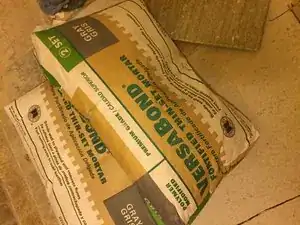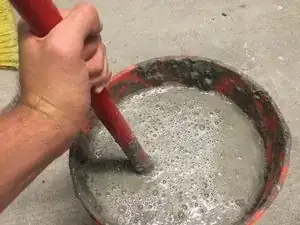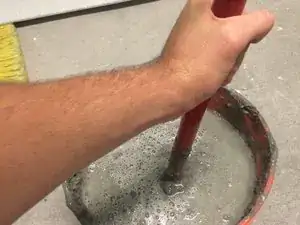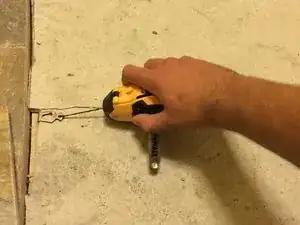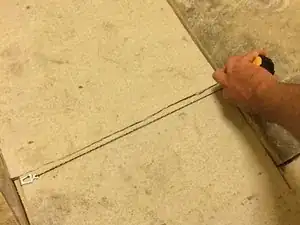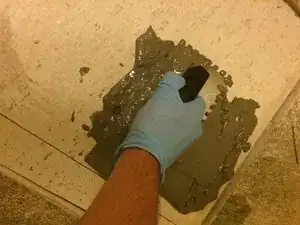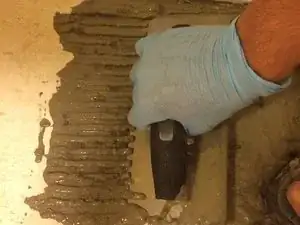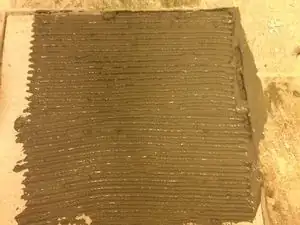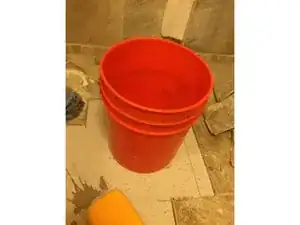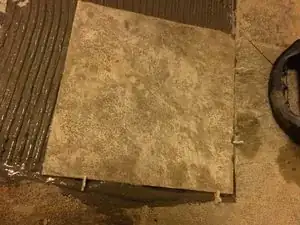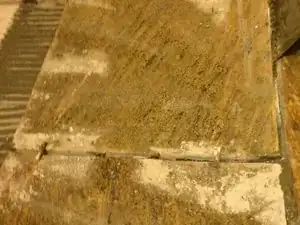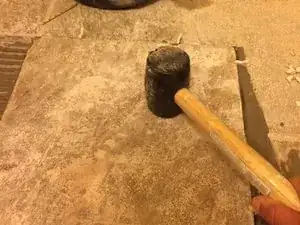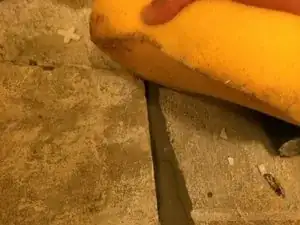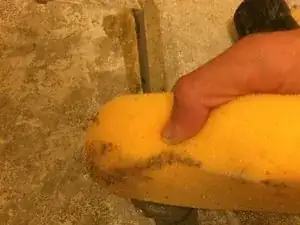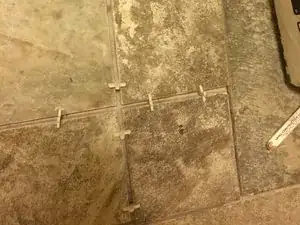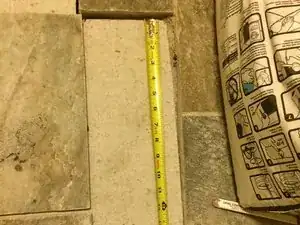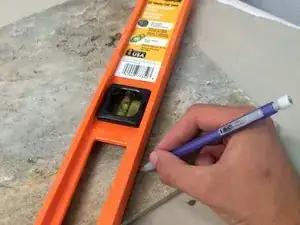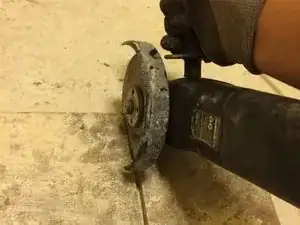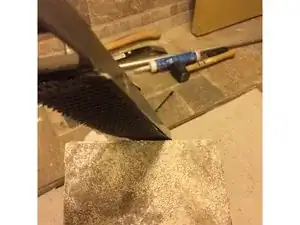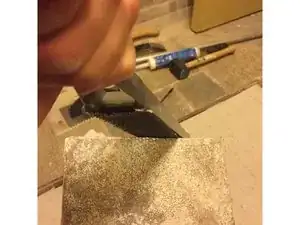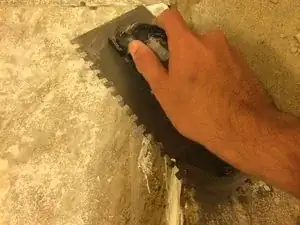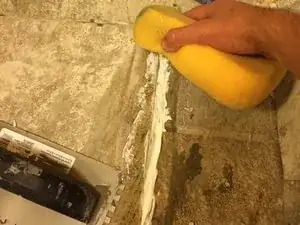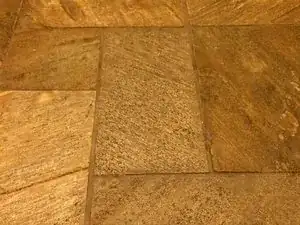Introduction
Laying any sort of flooring can be stressful and even dangerous for an inexperienced individual. This guide aims to provide a brief yet complete guide to laying flooring tile in a home bathroom. Safety tips, necessary tools, required materials, and the physical steps are all covered in this guide.
Tools
Parts
-
-
The first step is mixing your thin-set mortar and water into the five gallon bucket. (Precise ratio will be on mortar packaging)
-
-
-
Use the chalk line or the pencil to create reference lines along the floor that you will use to guide tile placement.
-
Your chalk lines/pencil lines should run parallel to the desired orientation of the tile.
-
These lines will act as your guide when setting the tile into the mortar.
-
-
-
Spread the mortar on the floor in a square no larger than 3'x3' utilizing the thin, flat side of the trowel.
-
Attempt to distribute the mortar evenly across the floor.
-
After the mortar is placed on the flooring, use the notched side of the trowel to apply the mortar to the flooring in it's final form. (Even rows visible in mortar.)
-
-
-
Once you have spread the amount of mortar that you will need, use the trowel once more to clean the excess mortar from the floor. Excess mortar can be returned to the bucket.
-
-
-
Lay the first tile square onto the mortar. For the best results, gently press down the tile and give slight twists.
-
If necessary for your tile type, apply tile spacers to the corners of this first piece.
-
Continue to place tile in this manner along the reference lines using spacers if needed.
-
-
-
Once the area has been completely covered in tile, utilize the rubber mallet and level to evenly flatten the tile.
-
Place the level midway between two tile pieces then observe the difference. if there is an obvious difference, hammer the higher tile into the mortar until it is even with its neighbor.
-
When hammering tile use enough force to sink the tile further into the mortar, but not enough to shatter the tile.
-
-
-
After leveling the tiled area, use a damp sponge to remove any excess mortar that may be on the tile.
-
-
-
Continue spreading mortar and tile in the same method as described in steps three through seven until the desired area has been tiled.
-
When placing tile, be sure to start from the back of the room so that you do not work yourself into a wall or corner.
-
-
-
Once you have tiled a majority of your floor, you may notice you have an area of flooring where your pre-cut tile will not fit.
-
Take a measurement of the space remaining.
-
Use this measurement to draw a cut-line on the tile with the pencil. Keep in mind the tile will have space between panels.
-
-
-
Use the tile saw to cut the tile along the predetermined cut line.
-
Once the tile has been cut, use the file to smooth the edges of the cut pieces.
-
Place the newly cut tile into the flooring that is uncovered.
-
-
-
allow the mortar to set for 24 hours.
-
Mix the grout as per manufacturer's instructions. a good mixture will have a thick, pasty feel to it.
-
Remove any tile spacers you may have used.
-
Utilize a trowel to spread the grout along the tile's joints, then diagonally along the joints.
-
Allow the grout to dry for 3 hours.
-
use a sponge and water to remove extra grout. The grout should not be level with the tile, instead keep the grout beneath the level of the tile.
-
-
-
Allow the tile and grout to set for three days. Avoid walking over the tile excessively during this time.
-
